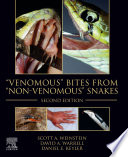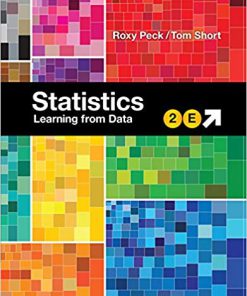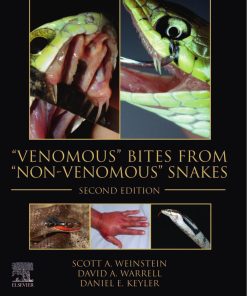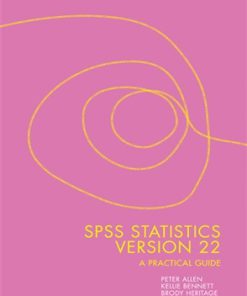Venomous Bites from “Non-Venomous” Snakes 2nd edition – eBook PDF
$50.00 Original price was: $50.00.$35.00Current price is: $35.00.
Venomous Bites from “Non-Venomous” Snakes – Ebook PDF
Venomous Bites from “Non-Venomous” Snakes 2nd edition – Ebook PDF Instant Delivery – ISBN(s): 9780128227862,9780128227879,0128227877,0128227869

Product details:
- ISBN-10 : 0128227869
- ISBN-13 : 978-0128227862
- Author: Scott A Weinstein, David A. Warrell, Daniel E Keyler
This book is the first significant contribution to thoroughly examine the potential hazards associated with snakes of the former family, Colubridae. This family contained >65% of living snake species (approximately 3,000 taxa) and has recently been split into multiple families. Many of these snakes produce oral secretions that contain toxins and other biologically-active substances. A large variety of these snakes figure in the pet industry, yet little documented information or formal study of their potential medical importance has been published. Therefore, although the possible medical importance of many of these species has been subjected to speculation since the mid-nineteenth century, there is a limited amount of useful descriptive information regarding the real hazard (or lack thereof) of snakes belonging to this diverse, artificial family.
There is a need for “one-stop shopping” offering information regarding their possible toxicity and clinical relevance as well as recommendations for medical management of their bites. This book is the first synthesis of this information and includes evidence-based risk assessment, hazard rankings and specific recommendations regarding important species, many common in captivity.
Table of contents:
-
Chapter 1. A summary of taxing taxonomic considerations: non-front-fanged snakes and the shifting sands of systematics
-
1.1. The shifting sands of taxonomic reassignments and their relevance to the envenomed patient
-
1.2. Brief glimpses of a vast landscape: the basics of taxonomic reassignments and discordance of morphological and molecular systematics investigations
-
1.3. Outlined inventory of a recent higher phylogeny of Caenophidian snakes
-
1.4. General phylogenetic inventory of Caenophidian snakes: comments and consideration of known medical significance
-
Chapter 2. Differences between buccal gland secretion and associated venom delivery systems of front-fanged snakes and non-front-fanged snakes: Low- versus high-pressure gland function and canaliculated versus solid dentition
-
2.1. Basic considerations regarding gland structure and function
-
2.2. Overview of hypotheses for the evolution of venom-delivery systems and other adaptive gland functions
-
2.3. Theories considering the evolution of canaliculated fangs and enlarged grooved teeth
-
2.4. Low-pressure ‘Duvernoy’s glands’ and high-pressure venom glands: a question of semantics?
-
Chapter 3. A brief overview of the history of non-front-fanged snake venom research
-
3.1. Background and beginnings
-
3.2. The modern era: advances and attributions
-
3.3. A brief overview of major classes of non-front-fanged colubroid venom components (see Tables 3.2–3.4)
-
Chapter 4. Medically significant bites by non-front-fanged snakes (NFFCs)
-
4.1. Typical features of documented cases and evidence-based risk
-
4.2. Some representative genera: typical features of bites and an overview of their natural history and toxinology Colubridae, Ahaetuliinae
-
4.3. Life-threatening and fatal cases: non-front-fanged snakes with lethal potential and assessment of evidence-based risk
-
4.4. Aberrant cases and representative cases without clear etiology: a critical assessment of risk
-
4.5. Pitfalls noted in documented cases: Differentiating Perceived versus Evidence-Based Risk
-
4.6. Recommendations for management of medically significant non-front-fanged snake bites
-
Chapter 5. Summary and conclusions
People also search:
You may also like…
Housekeeping & Leisure - Interior Design & Decoration
Architecture: From Prehistory to Postmodernity (2nd Edition) Marvin Trachtenberg – eBook PDF
Ebook-PDF
(eBook PDF) Crafting & Executing Strategy: The Quest for Competitive Advantage, 22 Edition











